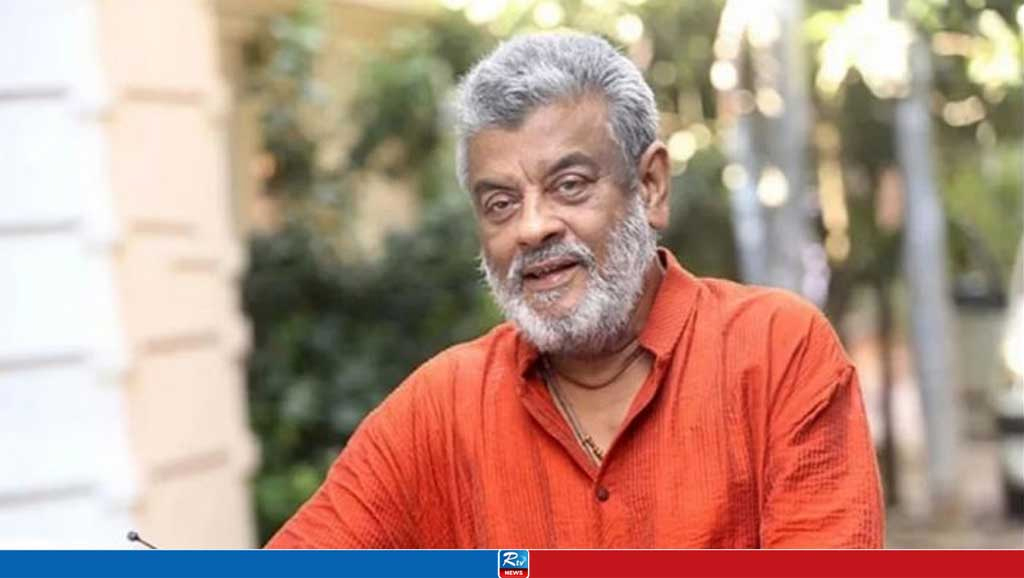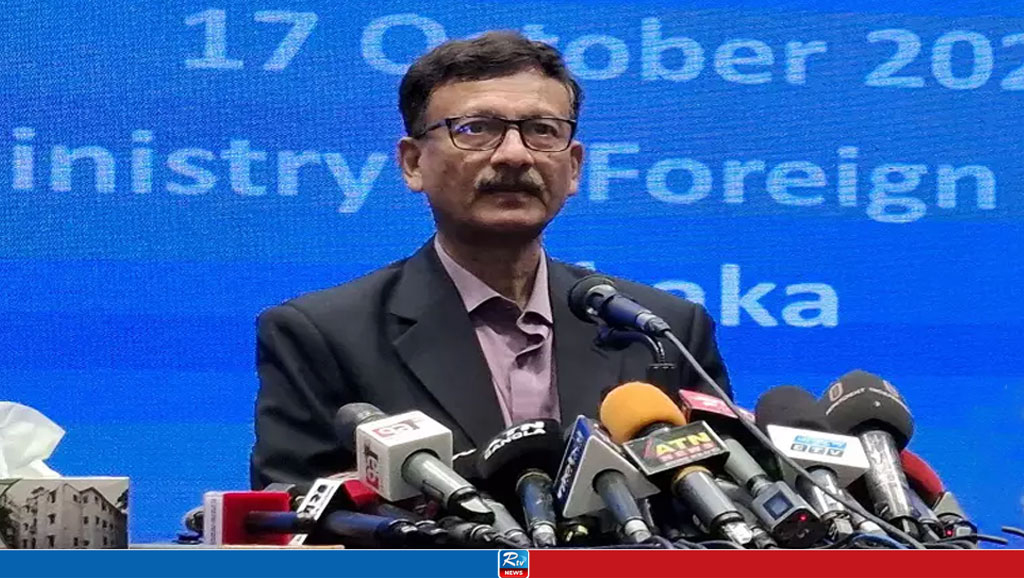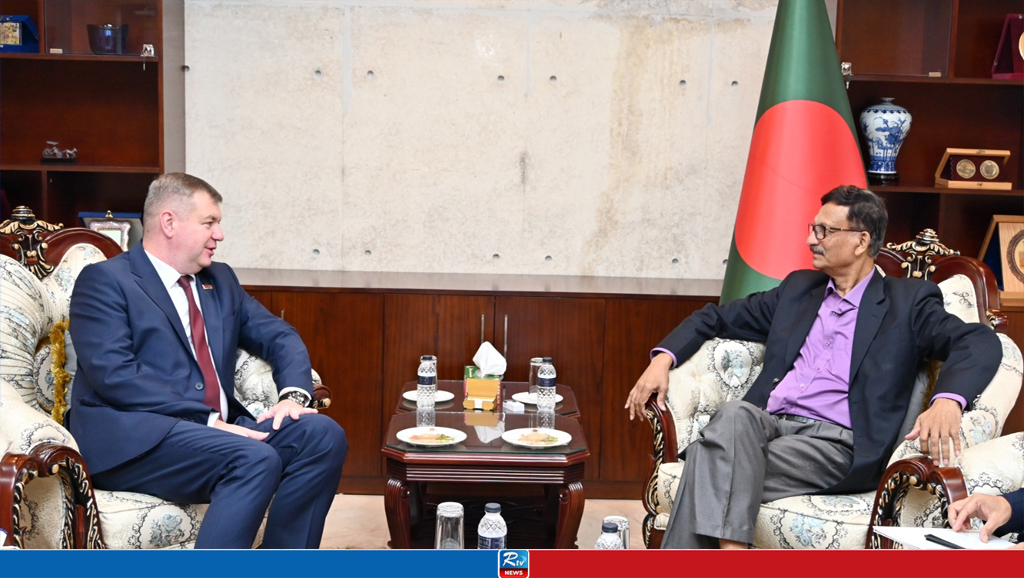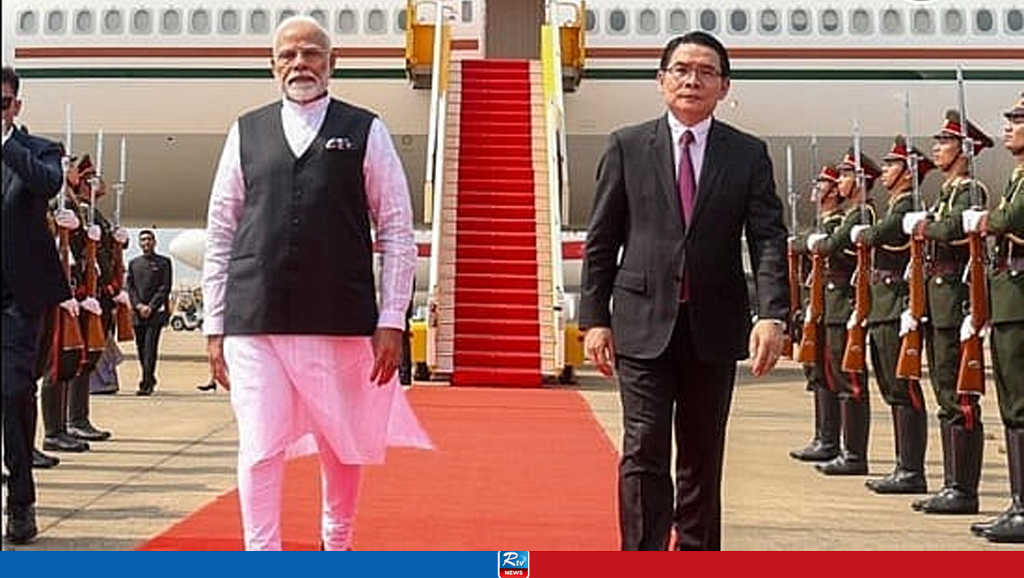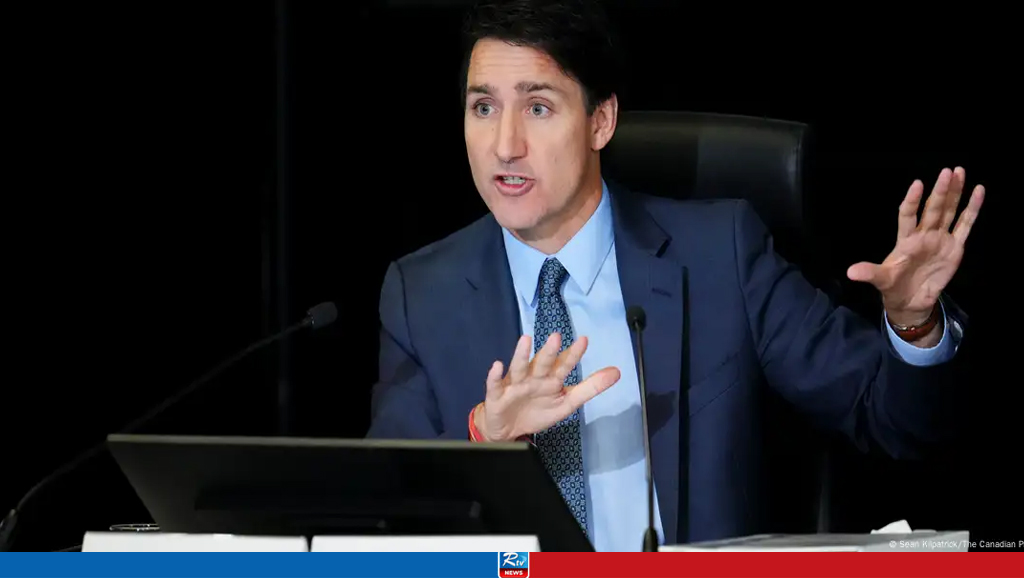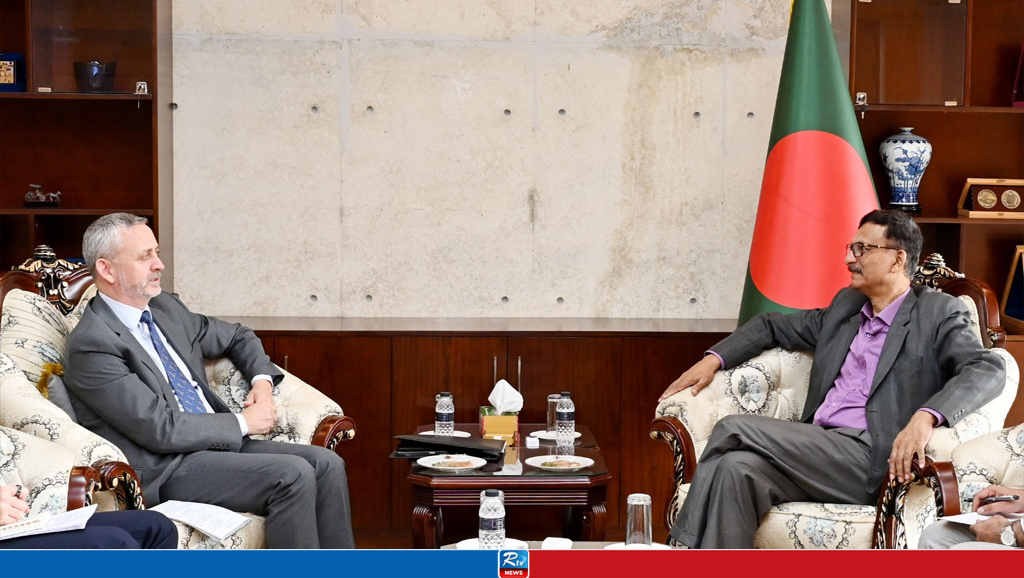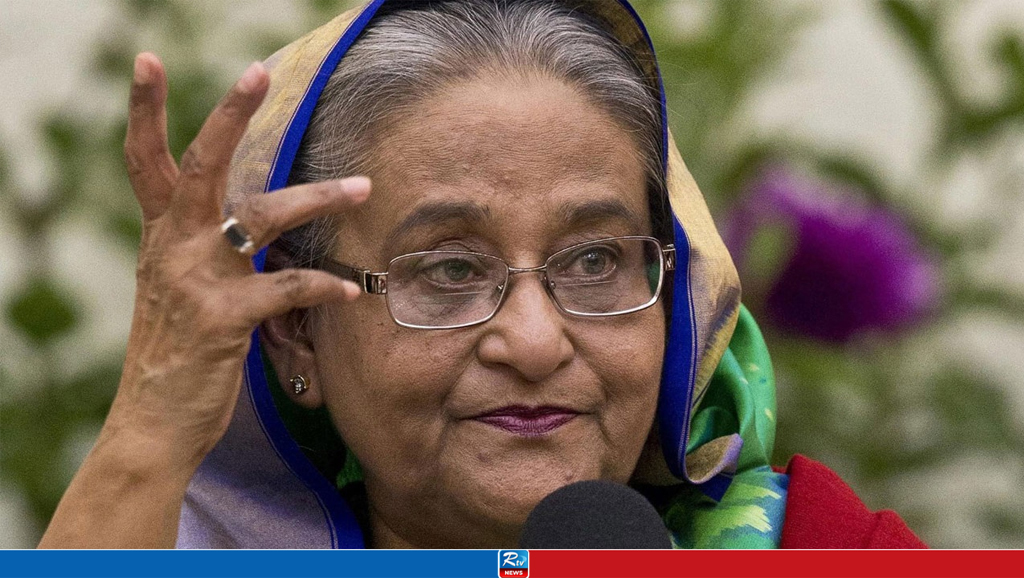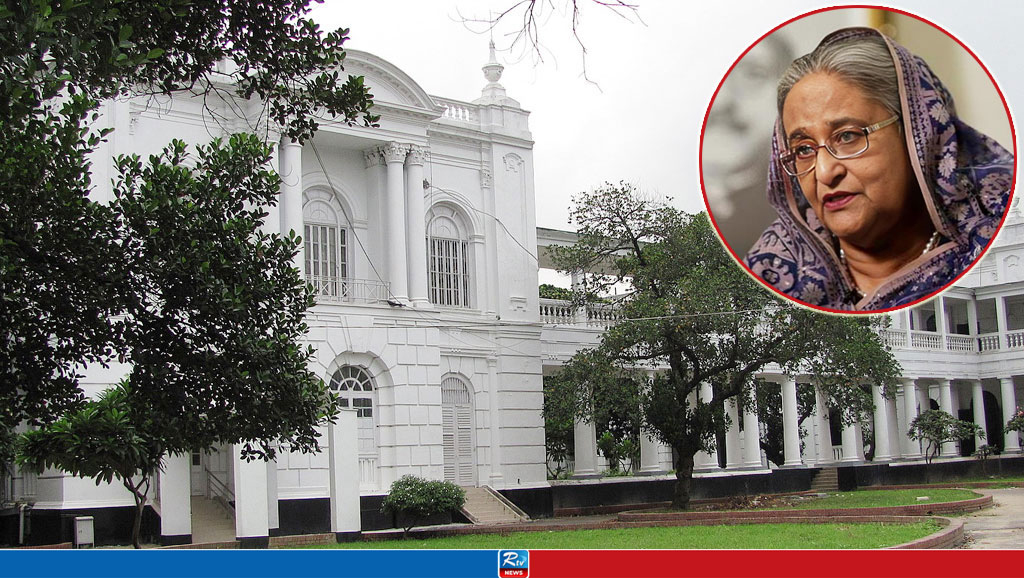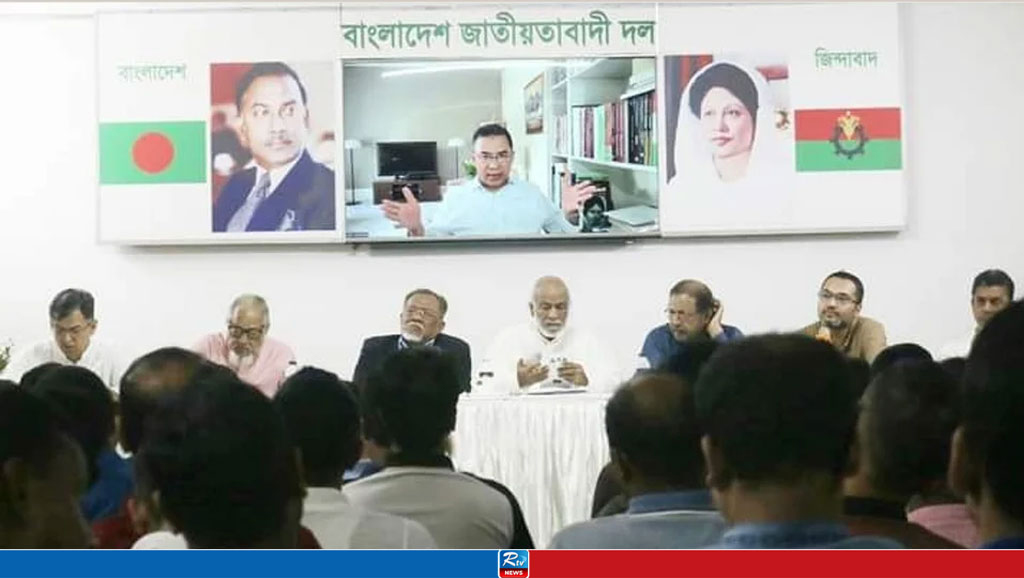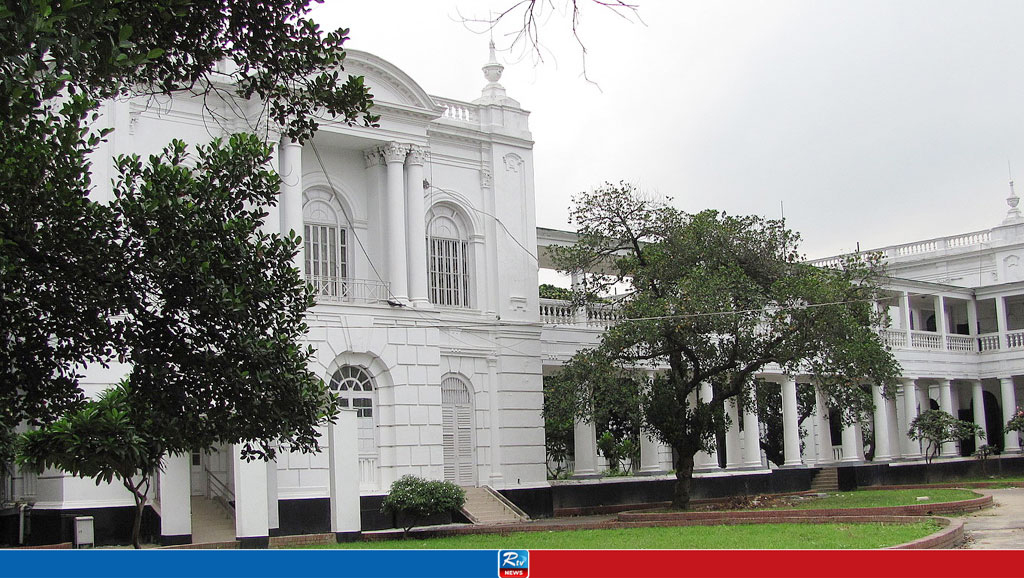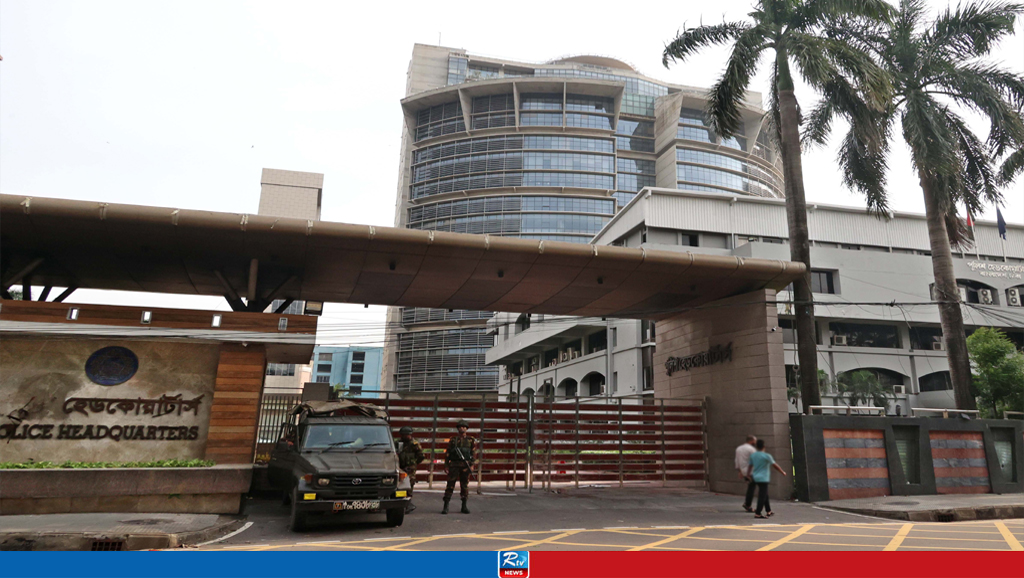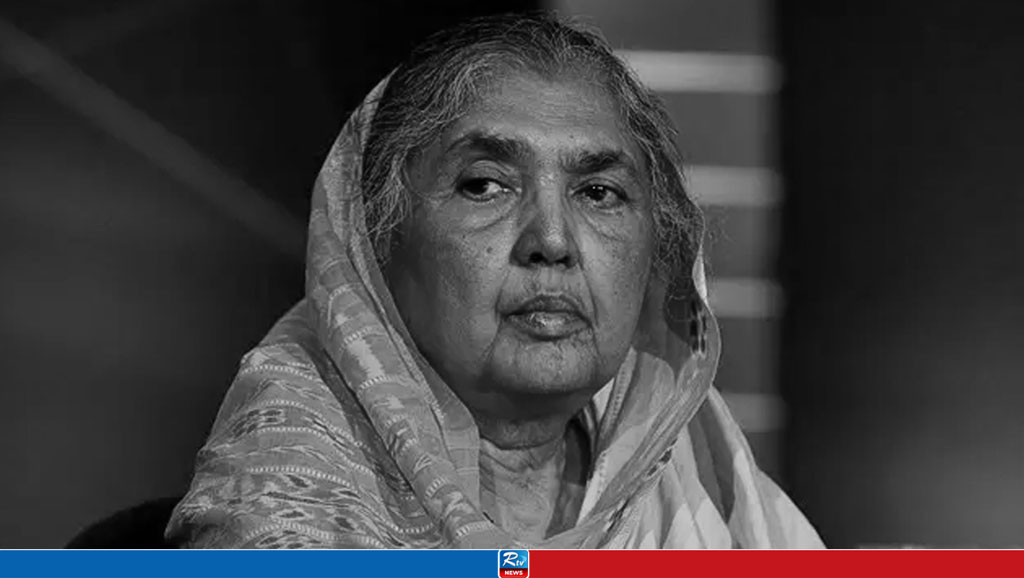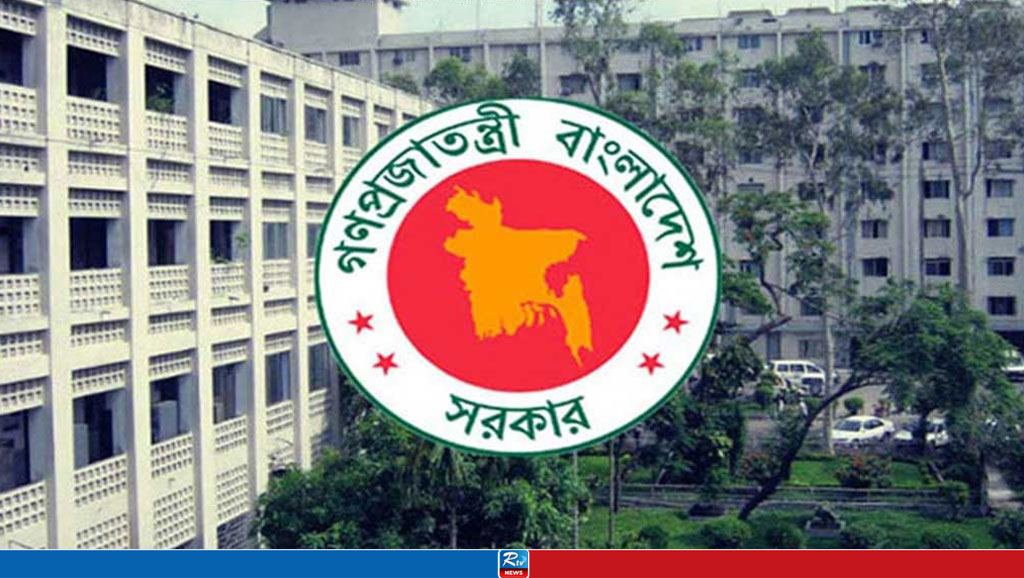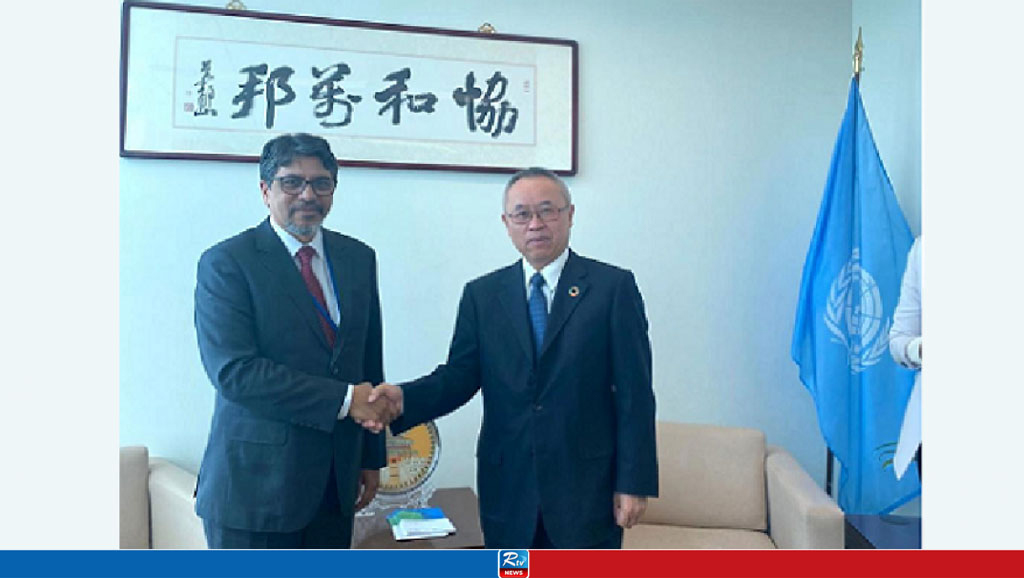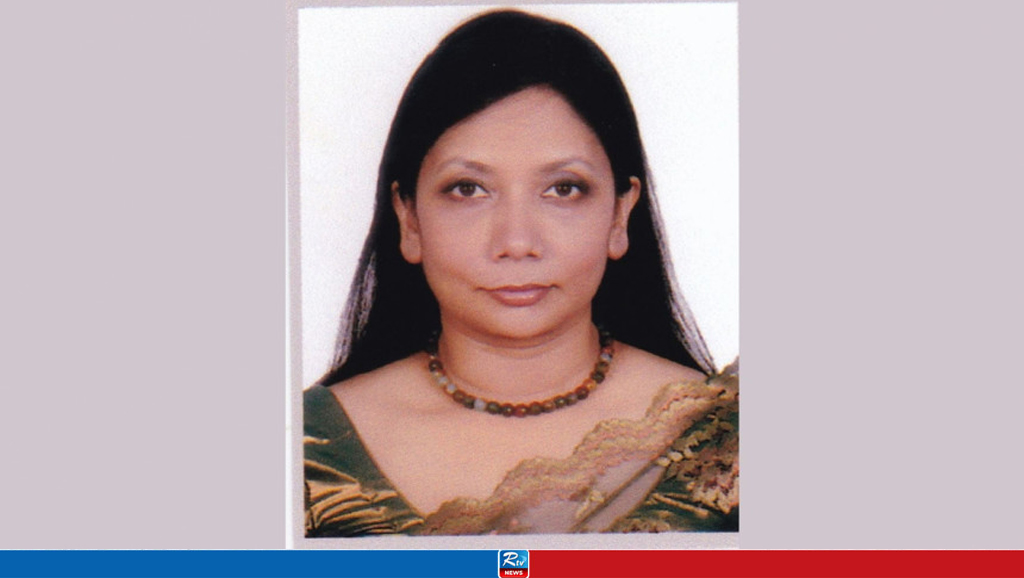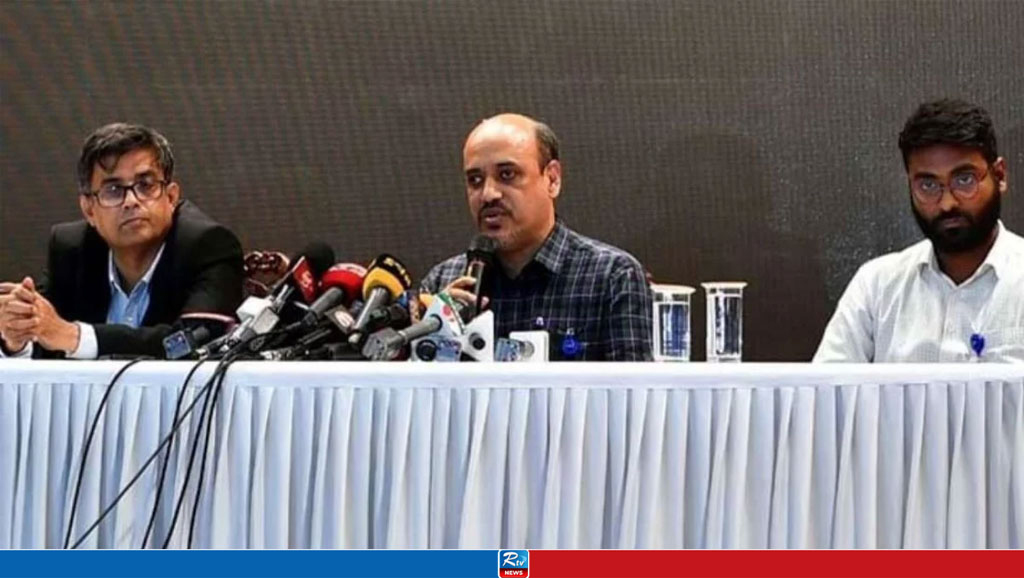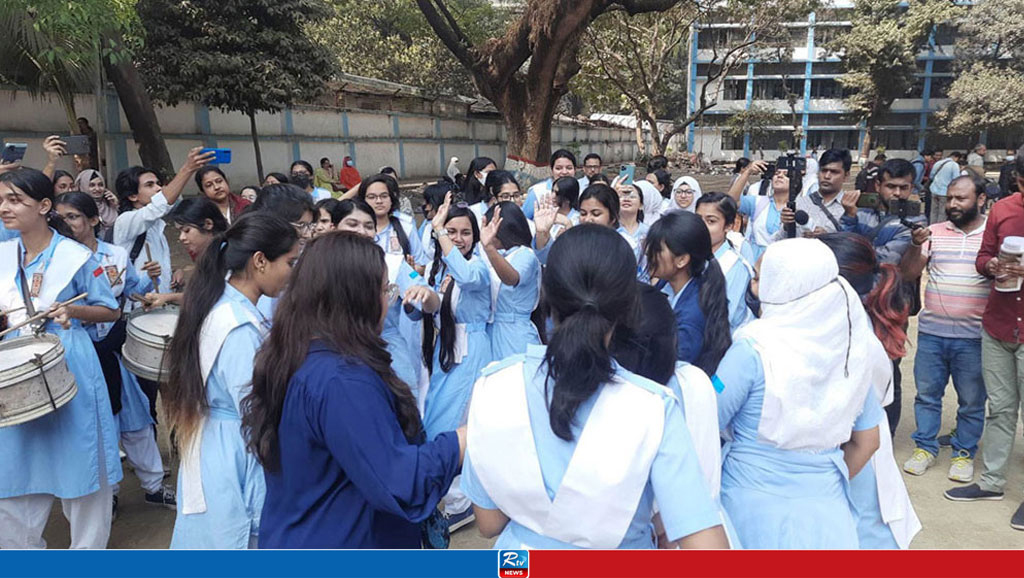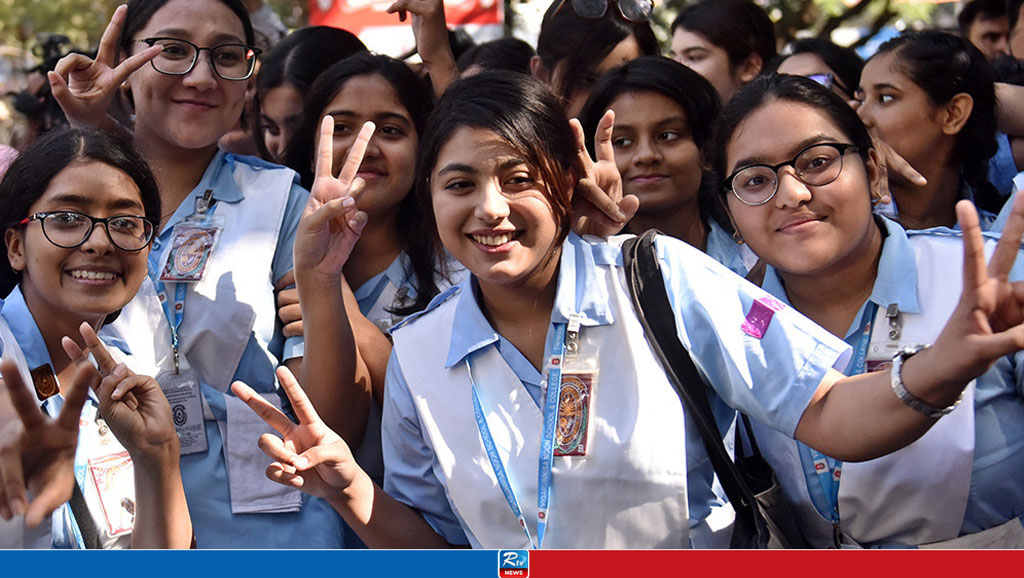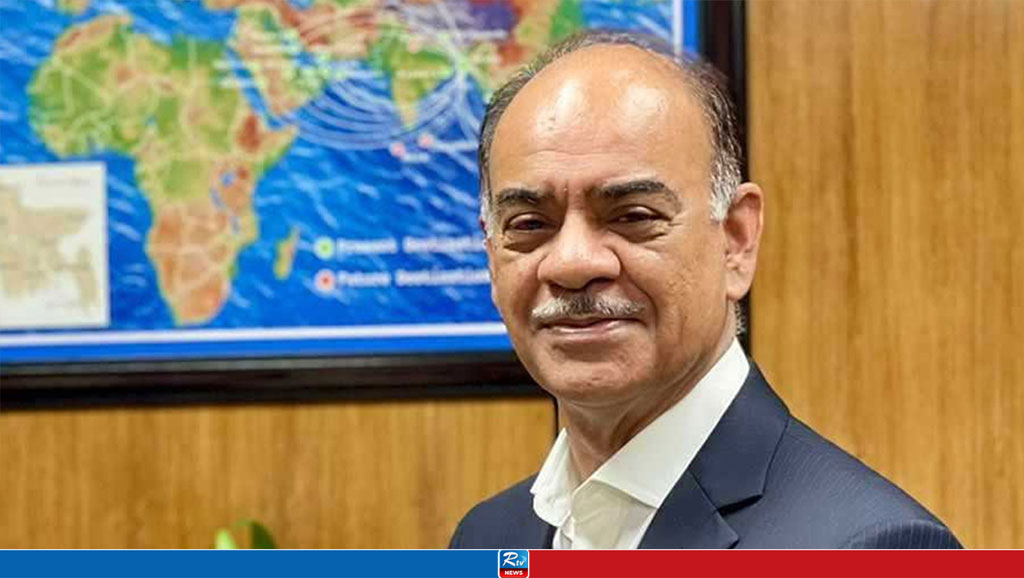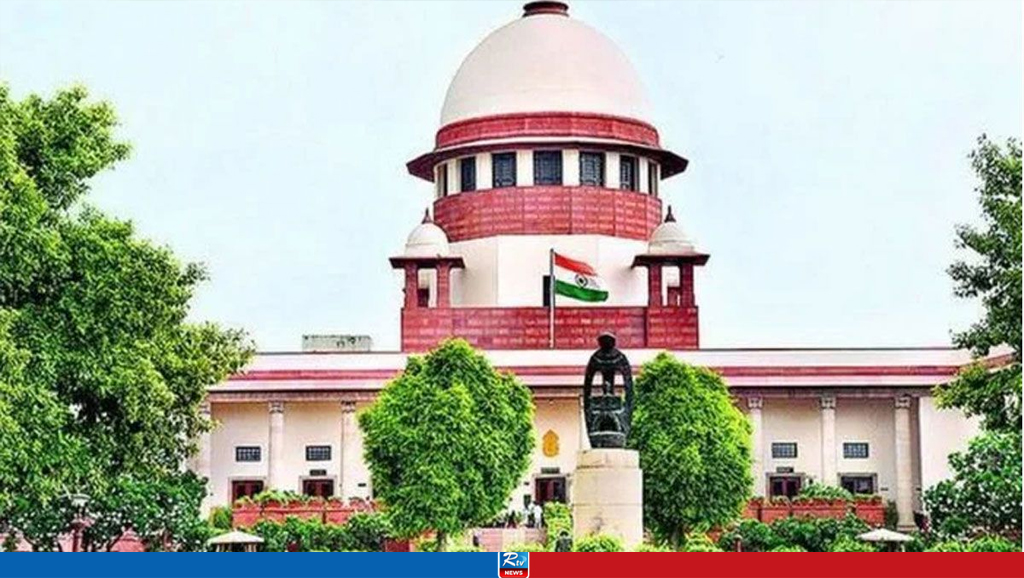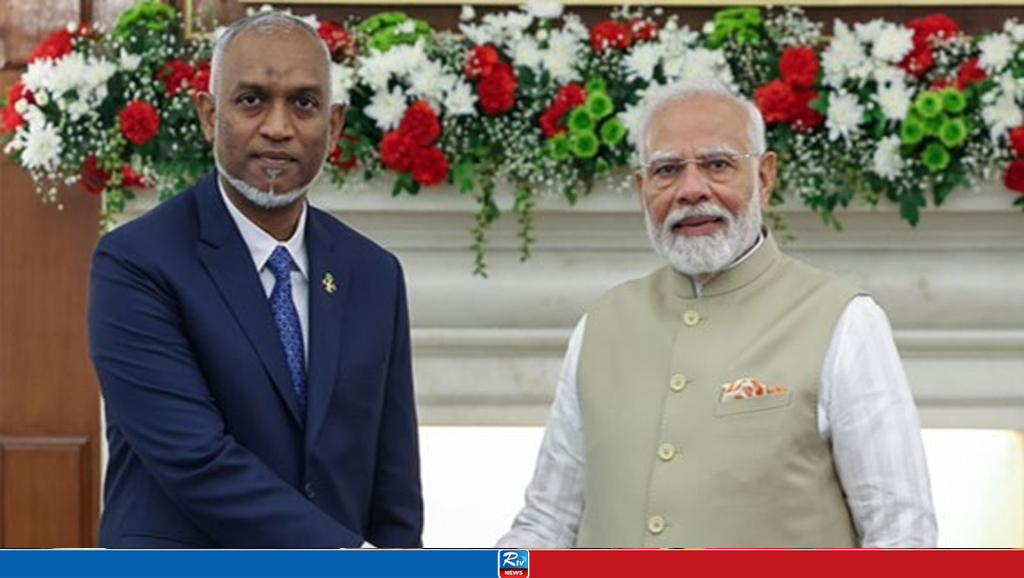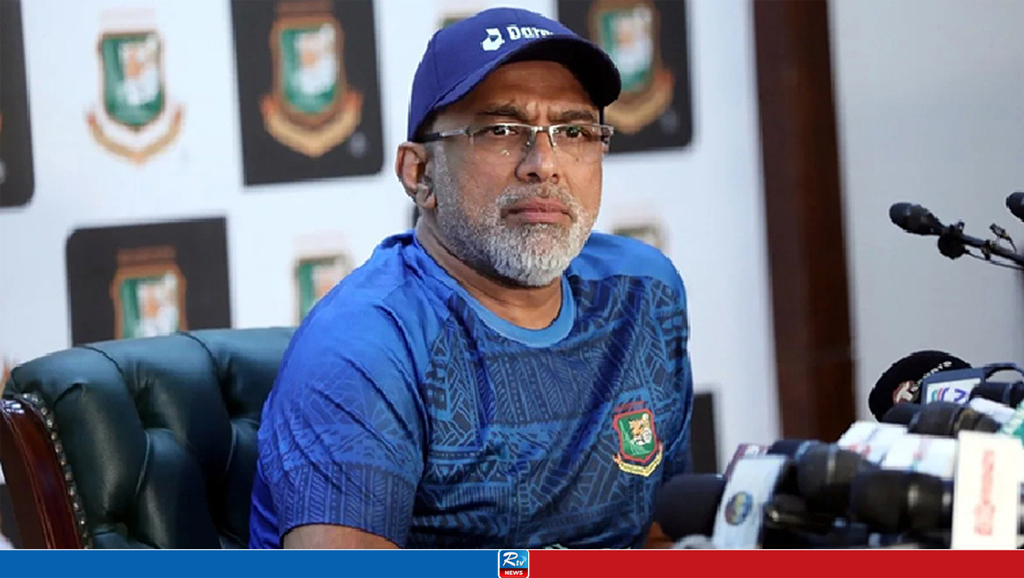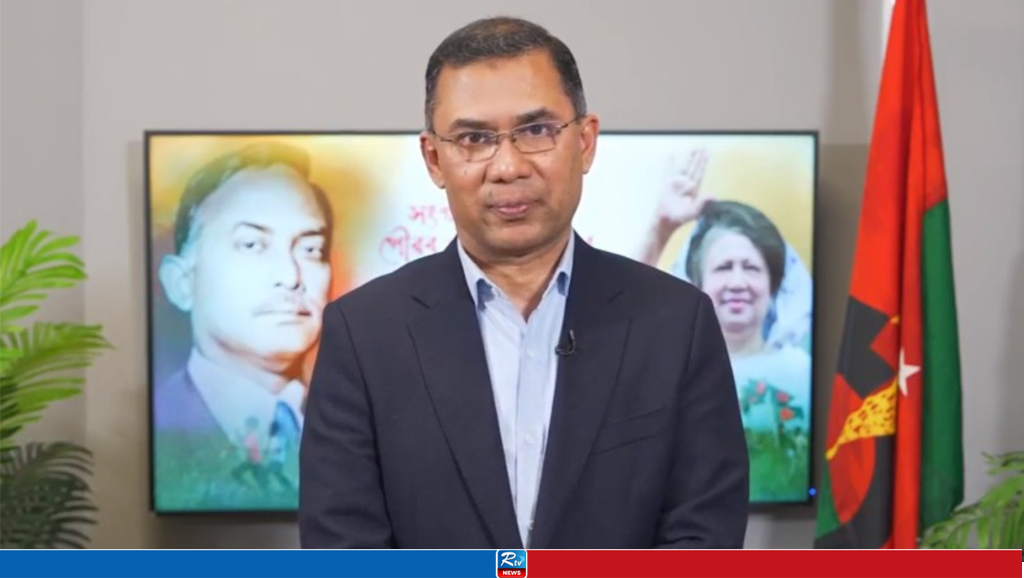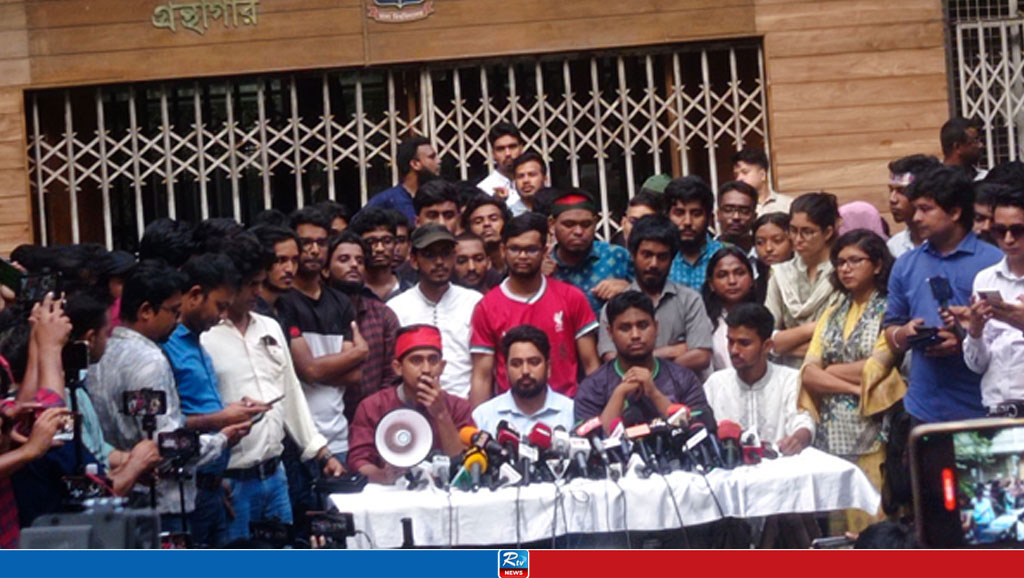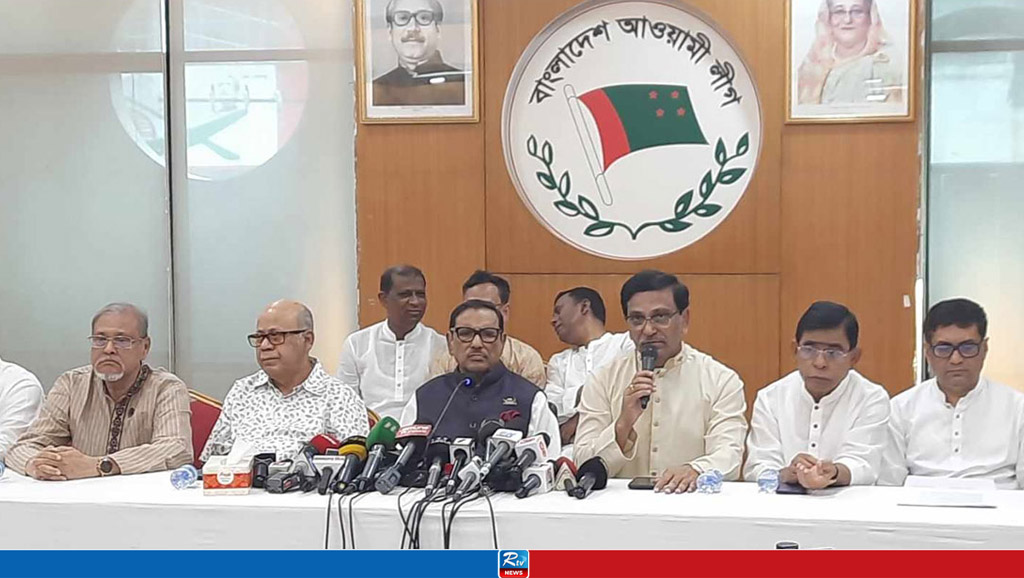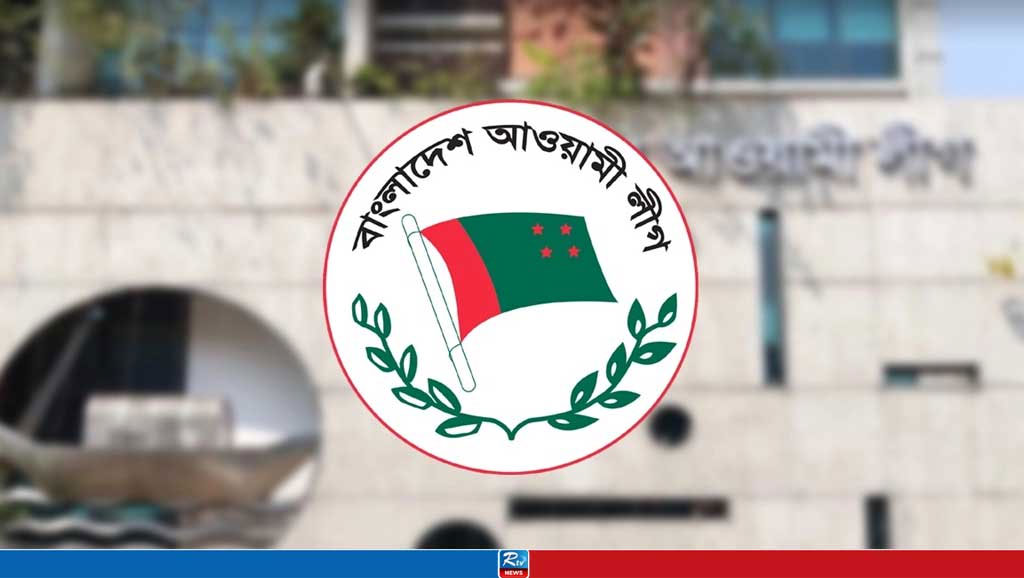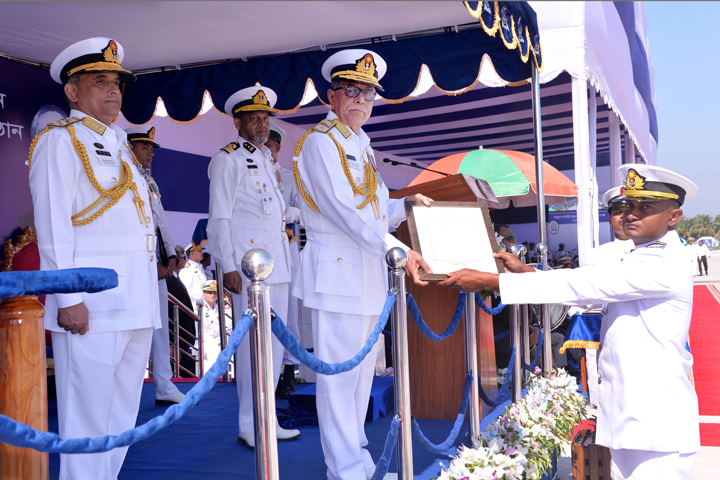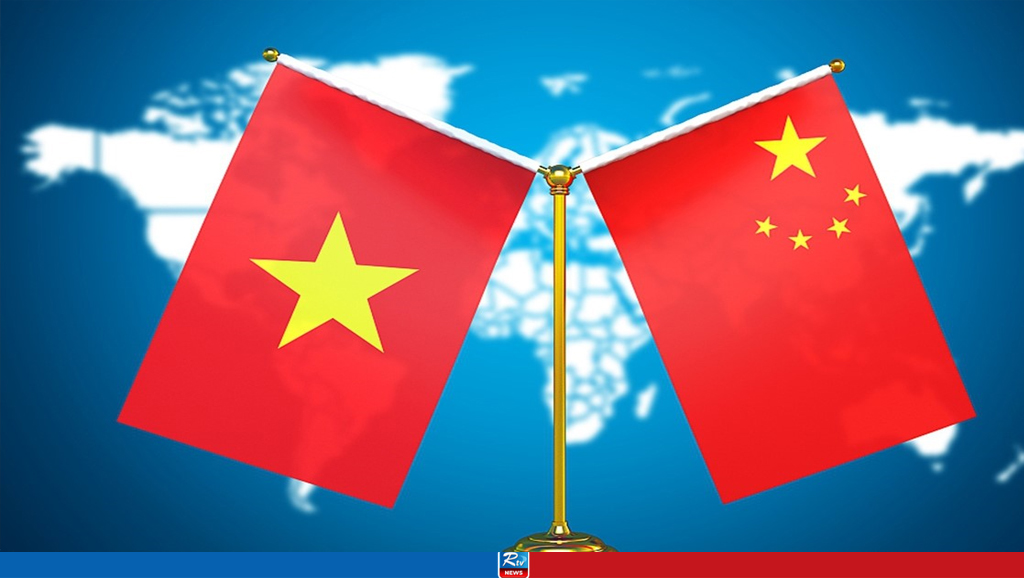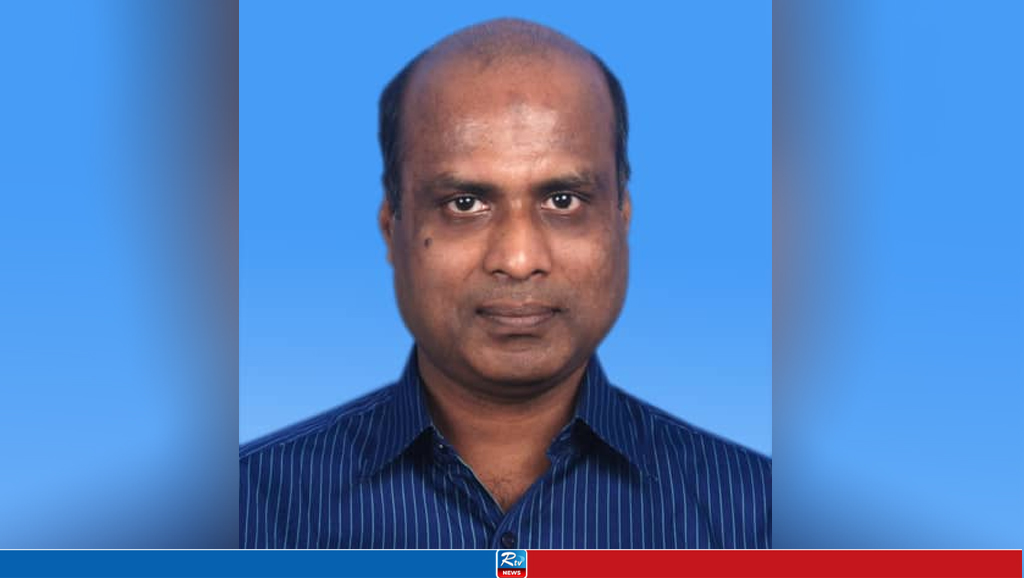He breathed his last at around 3 a.m. on Thursday (October 17) while undergoing treatment at Bangabandhu Sheikh Mujib Medical University in Dhaka. He was 78 years old at the time of his death.
The news of his passing was confirmed to the media by his nephew, Sumit Shyam Paul.
In recognition of his contributions to music, Shujeo Shyam was awarded the Ekushey Padak in 2018 and the Shilpakala Padak in 2015.
A recipient of the National Film Award, Shyam had been suffering from prolonged health issues. He had been receiving treatment at the Coronary Care Unit (CCU) of Bangabandhu Sheikh Mujib Medical University for nearly four months.
Shujeo Shyam composed the final song of the Swadhin Bangla Betar Kendra and also the first song performed after the surrender of the Pakistani military. The song, “Bijoy Nishan Urchhe Oi” (The Flag of Victory Waving High), was written by Shahidul Amin, with Shyam composing and directing the music. The lead vocalist of the song was Ajit Roy.
Among his notable compositions are:
“Rokto Diye Naam Likhhechi”
“Rokto Chai Rokto Chai”
“Aha Dhonnya Amar Janmabhumi”
Shujeo Shyam was born on March 14, 1946, in the Sylhet district of then British India. His father, Amarendra Chandra Shah, owned a tea estate named Indreshwar-Tea. Shyam spent his childhood in the tea gardens of Sylhet. He was the sixth among ten siblings.
- Latest
- Most Viewed

Renowned Musician Shujeo Shyam Passes Away
2 Minute Ago

Belarus Ambassador Calls on Foreign Adviser
18 Minute Ago

Arrest Warrant Issued Against Sheikh Hasina
20 Hour Ago

North Korea Says it Redefined South as 'Hostile State'
17 Oct 2024,09:47

Singer Liam Payne Dies After Falling from Balcony
17 Oct 2024,09:11

Trial for July-August Massacre Begins Today
17 Oct 2024,08:49

Shakib's Homecoming on Hold: Test Farewell in Jeopardy
17 Oct 2024,08:35

Former DNCC Mayor Atiq Arrested
16 Oct 2024,19:36

Bangladesh Police to Get New Uniform and Logo
16 Oct 2024,19:11

Nearly 100 Killed in Fuel Tanker Explosion in Nigeria
16 Oct 2024,18:34

Arrest Warrant Issued Against Sheikh Hasina
20 Hour Ago

Belarus Ambassador Calls on Foreign Adviser
18 Minute Ago

Renowned Musician Shujeo Shyam Passes Away
2 Minute Ago
Maritime piracy is one of humanity’s pet-peeves that should have been rooted out through collective efforts of the nations a long time ago. Concerted efforts have indeed been made by United Nations since the 1950s to define, analyse, monitor and tackle piracy issues head-on. However, maritime piracy has slowly evolved from a traditional problem to a critical global concern of the 21stcentury.
The United Nations Convention on the Law of the Sea (UNCLOS), 1982, defines “piracy” as an act of unlawful violence, plunder or detention by a private ship or aircraft against another ship or aircraft, goods or persons on board that is not authorised by any State, and committed for personal purposes or private gain in high seas or in places without jurisdiction of any state.
The UNCLOS casts a positive obligation upon its 170 signatories to cooperate to the fullest possible extent in the repression of piracy. UNCLOS created a harmonized regime for the high seas and reaffirmed international customs and principles that were codified through earlier attempts like the High Seas Convention, 1958, especially those relating to acts of non-state actors on high seas or terra nullis.
India, being the world’s only country with an ocean named after it has historically played a pivotal role in navigation, commerce and security endeavours at high seas. With one of the world’s largest navy fleet, India’s maritime approach is articulately encapsulated in its vision of ‘SAGAR’- ‘Security and Growth for All in the Region’.
The Indian maritime policy is aimed at strengthening maritime cooperation in the Indian Ocean Region (IOR) and ensuring a favourable and positive maritime environment. In addition to playing role of the good Samaritan for the maritime nations of the global south during the COVID era, India has empowered the naval security apparatus of various countries in the IOR through fleet-empowerment, capacity building and training exercises. However, the issue of maritime piracy is still a looming concern in the IOR and the oceans of the world at large.
Rise in Maritime Piracy
A resurgence and increase in maritime piracy has been observed in the Indian Ocean region and the Gulf of Aden near Somalia. Between the period of November 2023 and April 2024, as many as 25 reported cases of attacks on ships have been linked to piracy. Piracy and armed robbery increased by nearly 20% in 2023, with 194 recorded incidents as against 161 such incidents in 2022.
Somalia has been particularly flagged as a critical area of concern, noting a significant rise in the hijacking of dhows.Somali piracy operates in large areas that cover Kenya, Tanzania, Seychelles, Mozambique, Madagascar, the Indian Ocean, the Arabian Sea, and even the areas near the west coast of India and Maldives.
The role of climate change and deteriorating fish stocks has also led to “occasional piracy”, where individuals engage in piracy out of economic distress. As a result, poverty, lawlessness and take-over of important institutions remain pervasive in Somalia, especially in the backdrop of the ongoing civil war.
Another key hotspot for piracy is the Gulf of Aden, being a critical maritime trade hub in the Horn of Africa. The area has been infamous for pirate activities since 2005 and has recently seen a spike in reported incidents.
Experts attribute this to the shift in global security focus from the Gulf of Aden to the Red Sea primarily due to increased Houthi attacks. Further, the suspension of NATO operations and reallocation of naval resources, primarily U.S., United Kingdom and France, has led to increased pressure on regional naval resources. Key regions of piracy activities in the Pacific Ocean include the Strait of Hormuz, Malacca Strait and Bab-elMandeb, also serve as key economic chokepoints since a large part of Asia’s oil supply is transported through these regions.
India’s role in combatting maritime piracy
The Indian Navy has played an active role in combatting piracy in the IOR. It has often emerged as the first-responder to pirate attacks upon commercial vessels. For instance, on 14 December 2023, a commercial vessel named MV RUEN was hijacked by Somali piratesand detained in Somalia’s Puntland region.
The anti-piracy mission, which took place 260 nautical miles east of Somalia and 1,400 nm (2,600 km) from the Indian coast, saw the Indian Navy’s elite commandoes—MARCOS PRAHARs—being air-dropped by a C-17 aircraft and rescuing the crew besides apprehending 35 pirates.
In recent years, India has significantly enhanced its maritime strategy by bolstering its naval capabilities. Aiming to establish itself as a global maritime leader, India has developed the Maritime India Vision 2030, which outlines an ambitious plan for rapid growth within the maritime sector over the next decade.
Additionally, the Indian Navy has been committed to achieving full self-reliance — Atmanirbhar — by the centenary of India's independence in 2047. The appointment of the country's first National Maritime Security Coordinator (NMSC) in February 2022 underscores India's strong dedication to the maritime domain. The maritime sector has taken on a more prominent role in government policies, driven by India's expanding maritime and Blue Economy interests.
Several initiatives have been launched by the Indian government to promote the development of the maritime sector and increase Maritime Domain Awareness. These initiatives include the Indo-Pacific Oceans Initiative (IPOI). Through the IPOI that builds up on India's “Security and Growth for All in the Region” (SAGAR) vision.
India has also implemented a comprehensive maritime cooperation strategy that addresses maritime safety and security in addition to conservation and sustainable use of the maritime domain. Additionally, in December 2018, the Information Fusion Centre for the Indian Ocean Region (IFC-IOR) was established in Gurugram, Haryana to house shared information on piracy, illegal fishing, drug smuggling, maritime terrorism and even environmental hazards, with some special emphasis on the Gulf of Aden.
India’s most notable efforts to combat regional piracy can be seen through its operations and regional efforts for a cohesive response. Since January 2024, the Indian Navy tracked the movements of MV Ruen, which was used by pirates to launch attacks in IOR, before being recaptured in mid-March by the INS Kolkata. Other significant rescue operations include the rescue of 21 crew members from the bulk carrier Liberian-flagged vessel MV Lila Norfolk in the North Arabian Sea.
Additionally, under the Indian Navy-led Operation Sankalp over 5000 personnel have been deployed at sea, over 21 ships patrol the waters and over 900 hours of flying by maritime aircraft have been recorded to address maritime threats. Operation Sankalp has enabled India to play a strategic role as a “First Responder” and “Preferred Security Partner” in the IOR, having responded to over 18 incidents until March 2024.
Deeper emphasis has been laid on bolstering regional cooperation to combat maritime piracy. Key issues facing contemporary India, like connectivity and resilient supply chains, are closely linked to the stability and freedom of navigation in the Pacific Ocean. In 2018, the Prime Minister of India signed the Shared Vision of Maritime Cooperation in the Indo-Pacific and a Defence Cooperation Agreement with Indonesia that granted access to the strategic port of Sabang in northern Sumatra, which is situated at the entrance of the Malacca Strait.
India has also established a legal framework for maritime piracy through the Maritime Anti-Piracy Act, 2022 (“MAP Act”). The MAP Act was passed by the Parliament in 2022 to give effect to UNCLOS’s framework for combatting piracy and armed robbery at sea.
The Act defines piracy along similar lines as the UNCLOS, and extends its application to high seas, including the Exclusive Economic Zone of India and other States as well as all waters beyond the jurisdiction of any other State i.e. international waters. It enables Indian enforcement agencies and authorised personnelto arrest any ship and crew on suspicion of piracy in high seas. Penalties for offences include imprisonment for life and even death in cases of acts of piracy causeor attempt to cause death. The provisions also include extradition clauses whereby offences are extraditable even in the absence of such treaties on the basis of reciprocity between countries.
The resurgence of maritime piracy, especially in the Indian Ocean and the Gulf of Aden, presents serious challenges to global maritime security, stability and trade. Various factors, including the changing focus of security forces, climate change, and economic instability in certain countries, have fuelled this rise in piracy.
Unless checked, incidents may increase substantially. In response, India has developed a comprehensive maritime strategy that enhances its naval capabilities and promotes regional cooperation. The Indian Navy has undertaken proactive operations, such as those under Operation Sankalp and the successful recapture of hijacked vessels, showcasing its dedication to safeguarding the region's seas.
Additionally, India's legislative measures, particularly the MAP Act of 2022, bolster its legal framework for combating piracy. By fostering maritime domain awareness and establishing strategic partnerships through initiatives like the Indo-Pacific Oceans Initiative, India is positioning itself as a vital player in ensuring both regional and global maritime stability.
(Times of Oman)
Singer Liam Payne Dies After Falling from Balcony
British singer and former member of the famous band One Direction, Liam Payne, has passed away. He reportedly fell from the fourth-floor balcony of a hotel in Buenos Aires, Argentina, on Wednesday, October 16.
It is suspected that Payne lost control due to the influence of drugs or alcohol and jumped from the balcony. However, police have not yet confirmed whether his fall was accidental or substance-related.
Alberto Crescenti, head of the emergency medical services, told local TV that Payne sustained severe injuries.
The singer had traveled to Argentina for a concert on October 2 and had been staying in the country since then.
Following news of Payne's death, fans gathered outside the hotel in the capital city.
Payne was known as a composer and guitarist for One Direction, which disbanded in 2016. Since then, the members have pursued solo careers.
(Source: Reuters)

Shakib's 'Dorod' Set to Release on November 15: Hindi Version in the Works?
The release date is fast approaching for the much-anticipated film “Dorod”, starring Shakib Khan and Sonal Chauhan. Director Anonno Mamun is very excited about the project, and the film has already received certification approval. It is set to hit theaters next month. However, Mamun has shared another exciting thought regarding the film’s release.
Known for surprising his fans, Anonno Mamun previously teased on Facebook, saying, “Thank you for your comments. I’m glad this is the first time there’s been so much discussion about a movie’s plot.”
Challenging his audience further, he wrote, “I can guarantee, no matter how hard you try, you won’t guess the story. If anyone can match even one line of the plot, they’ll win a reward of one crore taka.”
Shakib Khan plays the lead role in “Dorod,” which is slated to release on November 15.
Initially, the film was planned for release in Bengali, but now the director has expressed interest in releasing it in Hindi as well. Through a social media post, Mamun asked fans for their opinions, indicating that he is considering a bilingual release of the film.
He posted, “I want to release Dorod in both Bengali and Hindi in Bangladesh... What do you think?” Many fans expressed their support, with one commenting, “If cinema owners agree, you can release it, but it would be better to have it in Bengali in rural theaters.” Another fan wrote, “Great idea, but ensure the dubbing quality is good.”
Previously, Shakib Khan also shared updates about “Dorod” on his Facebook page, posting the same promotional image and captioning it, “He’s coming with love-filled Dorod.”
This film marks the first on-screen collaboration between Shakib Khan and Bollywood actress Sonal Chauhan. The cast also includes Tollywood actress Payel Sarkar in a key role, alongside Biswajit Chakraborty, Rajesh Sharma, Elina Shammi, Imtu Ratish, Rahul Dev, Safa Marwa, Jannatul Ferdoush Peya, and many others.

Veteran Actor Jamal Uddin Hossain Passes Away
Ekushey Medalist Jamal Uddin Hossain is no more. The actor passed away on Saturday (October 12) at Rockyview Hospital in Calgary, Canada. He was 81 years old.
The actor was living in America with his daughter for a long time. A few days ago, while visiting his son in Canada, he fell ill.
Actor-drama director Shamsul Alam Bakul confirmed the news of Jamal Uddin Hossain's death in America.
According to family sources, Jamal Uddin was rushed to the hospital when he developed respiratory problems. Later, when the condition worsened, Jamaluddin Hossain was taken on life support.
His son Tasfin Hossain Tapu is an assistant professor of finance at Mount Royal University in Calgary.
Jamaluddin Hossain started acting in stage plays in the mid-seventies. This member of the civic theater community later worked in television dramas and films. His wife Roshan Ara Hossain is also an actress. Jamaluddin Hossain has been very irregular in acting for the past 15 years. He has been living permanently in the United States for the past 7 years with his daughter.
Jamal Uddin Hossain once left the 'Nagorik Natya Sampradaya' and established the 'Nagorik Natyangan Ensemble'. He was a presidium member of the Bangladesh Group Theater Federation. Acted in many popular dramas on BTV. He directed many stage plays.
Some of the popular dramas directed by him include Chand Boniker Pala, Khachar Vitor Achin Pakhi, Raja Rani, Bibi Saheb, and Jugolbondi.

Ratan Tata's Funeral: Aamir Khan, Kiran Rao Pay Last Respect to Icon
Ratan Tata passed away at Breach Candy Hospital in Mumbai aged 86 on Wednesday. On Monday, he shared that he was going to the hospital for an age-related check-up.
Bollywood actor Aamir Khan along with his former wife and director Kiran Rao arrived at Mumbai’s National Centre for the Performing Arts (NCPA) to pay respects to Ratan Tata, who passed away on Wednesday at the age of 86. The actor said he will always be cherished for his contribution to the country.
Aamir arrives
On Thursday afternoon, Aamir was spotted arriving to pay his last respects to Ratan Tata with his ex-wife. He was seen wearing a grey short kurta along with black pants, while Kiran wore a white top with black trousers.
He was seen merging in the crowd to pay his respects to Ratan Tata. They were in a somber mood.
While exiting the venue, Aamir shared his tribute to the icon, saying, “Today is a sad day for all of us, and the whole country. What he has done for the nation through his company under his leadership is priceless. He was a rare person. We all will miss him a lot”.
Kiran also spoke to the media stationed outside the venue and remembered spending time with him. “We were lucky to spend some time with him. He was a good soul, and he is no longer with us. He has done a lot for us”.
Ratan Tata dies
On Wednesday, Ratan Tata, chairman of the Tata group for over two decades, died at 11.30 pm at Breach Candy Hospital in south Mumbai. A Padma Vibhushan recipient, he had been in intensive care at the hospital since Monday. Early on Monday, he posted a note on social media asserting there was no cause for concern regarding his health and that he was undergoing check-ups for age-related medical conditions amid reports of his admission to a hospital.
Ratan Tata's body was on Thursday morning taken from his house in a hearse, decked with white flowers, to the NCPA in south Mumbai where it would be kept for people to pay their last respects. His last rites will be performed at Mumbai’s Worli Crematorium. He was accorded a state funeral by Maharashtra.
View this post on Instagram A post shared by Viral Bhayani (@viralbhayani)

Since the conclusion of the recent ODI World Cup, Bangladesh’s head coach Chandika Hathurusingha has been a hot topic of discussion. After the failure at the T20 World Cup, many questioned why he was retained. Under Hathurusingha, Bangladesh was whitewashed in both the Test and T20 series against India.
Now, the Bangladesh Cricket Board (BCB) has decided to part ways with the Sri Lankan head coach.
On Tuesday (October 15), BCB President Faruq Ahmed confirmed Hathurusingha’s dismissal in a press conference held at the Sher-e-Bangla National Stadium in Mirpur.
Just five days before the series against South Africa, the BCB relieved him of his duties as the head coach of the national team.
Hathurusingha barely survived after Bangladesh's impressive performance against Pakistan, but the humiliating whitewash against India brought the criticism back to him. Today, his chapter in Bangladesh cricket has officially come to an end.
This was Hathurusingha’s second stint as Bangladesh's head coach. His first term lasted from May 2014 to October 2017. Back then, he resigned mid-tour via email during Bangladesh’s tour of South Africa, even though his contract was valid until the 2019 World Cup. Shortly after leaving Bangladesh, he joined Sri Lanka's national team as head coach.
In his second tenure, Hathurusingha returned to Bangladesh in 2023 under a contract worth $35,000 per month, which was set to run until February 2025. However, once again, his tenure was cut short.
During his second stint, Bangladesh played 10 Tests, 35 ODIs, and 35 T20Is under Hathurusingha’s guidance. In Tests, the results were evenly split with 5 wins and 5 losses. However, the ODI performance was disappointing: 13 wins, 19 losses, and 3 matches without a result. In T20Is, Bangladesh won 19 out of 35 matches, lost 15, and 1 ended without a result.
Mohammad Atiqul Islam, former mayor of Dhaka North City Corporation (DNCC), has been arrested.
Police detained him on the evening of Wednesday, October 16, from the DOHS area in Mohakhali, Dhaka.
The news was confirmed by Talebur Rahman, Deputy Director of the Dhaka Metropolitan Police’s (DMP) Media Wing.
Tejgaon Police Station Officer-in-Charge (OC) Mohammad Mobarak Hossain stated that three cases have been filed against Atiqul Islam at Mohammadpur Police Station in connection with a student movement protesting discrimination. He will be presented in court on Thursday, with a request for remand.
Atiqul Islam was elected as mayor on February 28, 2019, under the Awami League’s symbol of a boat. Following the fall of the Awami League government, he faced public outrage on August 18 at the city corporation’s headquarters, Nagar Bhaban. He managed to escape through the back staircase.
On August 19, the government removed Atiqul Islam along with the mayors of 12 other city corporations.
Atiqul Islam was born on July 1, 1969, in Daudkandi, Comilla. He started his career in the garment sector in 1985. His father was a police officer. Atiqul is the youngest among five brothers and six sisters.
The news is alarming. Over the past two months (August and September), around 150 companies from both domestic and international groups, including City Group, BSRM, and US-Bangla, have decided to shut down their operations. This will put the jobs of hundreds of thousands of people at risk, while also damaging the national economy.
According to information from the companies, they are closing permanently based on decisions by their boards of directors. Around 160 companies are already in the process of shutting down. The list of closures includes both small enterprises and large corporations. These companies, registered with the Registrar of Joint Stock Companies and Firms (RJSC), come from both product and service sectors. Additionally, some companies that registered with plans for new investments are now on the closure list.
Data from the RJSC shows that 128 companies closed down in the last five months (May to September). Of these, a record 46 companies shut their doors in August alone, followed by 26 in September. Between July and September, a total of 83 companies ceased operations.
It has been reported that the number of closures began to rise in July, the first month of the current fiscal year. Government data indicates that 16 private companies closed in June, followed by 21 in July.
Recently, political instability and the impact of floods have caused severe damage across various sectors, particularly in industry, tourism, agriculture, and services. In addition, labor unrest in the ready-made garment (RMG) sector—one of the country's top exports—is causing further instability. If the situation does not improve, business owners may face even more difficulties.
Companies Closing Permanently
According to the information provided by the companies, based on board decisions, many businesses are shutting down permanently. Around 160 companies are already in the process of closure. These include both small businesses and large corporate entities, spanning both product and service sectors. Some companies that had recently registered for new investments are also shutting down.
The Registrar of Joint Stock Companies and Firms (RJSC) reports that 128 companies closed in the last five months (May to September), with August alone witnessing a record 46 closures, followed by 26 in September. During July-September, 83 companies ceased operations.
The trend began in July when 21 companies closed, compared to 16 in June.
Causes of Business Shutdowns
Political instability and floods have severely affected various sectors, particularly industry, tourism, agriculture, and services. Additionally, labor unrest in the ready-made garment (RMG) sector—one of the country’s top exports—has created further uncertainty. If the situation does not improve, businesses will face even greater challenges.
Domestic Companies Shutting Down
City Group: Shutting down 30 companies, including City Hair Oil, City Seed Crushing Industries, City Condensed Milk, Shampa Sugar Industries, City Biscuit, and several oil mills. The group has appointed a liquidator, G.K. Rajbongshi, who called for an Extraordinary General Meeting (EGM) in September for closure proceedings.
US-Bangla Group: Closing five companies, including US-BD Security Services, US-Bangla Furniture, and US-Bangla Pharmaceuticals. Liquidators have been appointed following their EGM in September.
BSRM Group: Appointed a liquidator for its Recycling Industries division.
Other Companies: Hospitals like Asmat Ali Khan Central Hospital, healthcare companies such as Lab Quest, and paper manufacturers like Hosendi Paper Mills are also shutting down. Additionally, firms from diverse sectors—including Esquire Holdings, Intek Greenpack, and Urban Fit Properties—are winding up operations.
Foreign Companies Closing Operations
Taiwan-based Maryland Engineering and Singapore-based Weeding Private Company are among those shutting down operations.
South Korea’s Bride Medical & Education Services and India’s Shipcard Marine Bangladesh Ltd. have decided to close voluntarily.
Kite Tech International has also approved its closure during a recent EGM.
Economic and Business Outlook
Mir Nasir Hossain, former FBCCI president, noted that many companies are struggling to recover from pre-existing economic crises. While some businesses have managed to survive, others couldn’t overcome the current challenges. He expressed hope that the business environment will improve soon.
Abul Kasem Khan, vice-chairman of A.K. Khan Group, explained that registering new companies or closing existing ones is a regular part of business. Some companies are shut down to avoid taxes or losses, while others close to reinvest elsewhere. He emphasized that the current economic challenges began three years ago but expressed optimism about future domestic and foreign investments.
Analysts' Perspective
Analysts attribute the closures to inflation, rising production costs, reduced sales, high-interest rates, labor unrest, technical and logistical issues, raw material shortages due to dollar crises, and global conflicts. Political shifts have also limited business opportunities for some companies. However, they believe that the situation will not persist for long and expect improvements in the near future.
This report reflects the growing trend of business closures, driven by both internal and external challenges. October is expected to continue this pattern, with more companies planning EGMs to formalize their shutdowns.
Aishwarya Rai Stuns in Red at 'Paris Fashion Week'
Paris Fashion Week wouldn't be complete without the incomparable Aishwarya Rai Bachchan gracing the runway. The veteran actress and long-time L'Oreal brand ambassador once again stole the show, showcasing her timeless elegance and poise.
Aishwarya dazzled in a custom red Mossi outfit, exuding confidence and sophistication as she sashayed down the catwalk. Her signature pose – a flying kiss – left the audience enchanted, while her gracious Namaste at the end of the ramp walk earned applause.
As part of the L'Oreal Paris show "Walk Your Worth," Aishwarya presented a stunning creation from the Women Ready-to-wear Spring-Summer 2025 collection at the iconic Palais Garnier opera house. L'Oreal Paris shared glimpses of Aishwarya's ramp walk on Instagram and wrote, "Step into a world of regal beauty with Aishwarya Rai Bachchan. Her look was a mesmerizing blend of tradition and modernity, embodying worth and elegance at every step."
Fans could not contain their excitement seeing Aishwarya rocking the ramp. They wrote sweet messages for Aishwarya in the post's comments section. One person wrote, "The best Face of Loreal," another person wrote, "This lady wins everything with just her presence. Bringing Panche and Elan to Paris. You're worth it Ma'am," yet another person wrote, "OMG she's 50+, Hard to believe."
Aishwarya's Paris Fashion Week appearance was a statement-making moment, both on and off the runway. Sporting her wedding ring, she subtly quashed divorce rumors surrounding her marriage to Abhishek Bachchan, reaffirming their enduring bond.
Aishwarya was also termed humble by netizens as she sweetly held an excited fan’s hands as he brought her a gift. The actor was seen getting ready for her ramp walk as the person approached her and was overcome with emotion.
The Paris Fashion Week outing was a family affair for Aishwarya as her daughter Aaradhya Bachchan, tagged along to Paris, enjoying the glamour and excitement of the fashion capital. Aaradhya was seen accompanying her mother as she prepped for the big night.
Aishwarya's runway appearance was complemented by Alia Bhatt's debut at Paris Fashion Week, marking a significant milestone in the younger actress's career. The L'Oreal show also featured Jane Fonda, Eva Longoria, Kendall Jenner, and Cara Delevigne among others.
On the work front, Aishwarya continues to soar, having recently received the Best Actress award at the South Indian International Movie Awards (SIIMA) for her remarkable performance in Mani Ratnam's Ponniyin Selvan 2. In her acceptance speech, Aishwarya said, "Thank you so very much, SIMA, for honoring me with this award. It means the world to me because Ponniyin Selvan was a movie so close to my heart. Directed by my mentor Mani Ratnam, this award recognizes not just my work as Nandini but the efforts of the entire team."
Source: TIE

Significance of Eating Hilsa During Durga Puja
Hilsa or Ilish plays a crucial role in Bengali culture. From Wedding rituals to Durga Puja celebrations, Hilsa fish is crucial for holy sacrifice in the region, symbolizing the collective hope for a future filled with luck and happiness.
Ilish is not only considered auspicious but also the national fish of Bangladesh, apart from its importance in West Bengal during Durga Puja. So let’s know more about the Hilsa fish or Bangladeshi Padma Ilish.
What is Hilsa fish or Ilish fish?
The Hilsa fish, also called Ilish, holds an exceptional position in the culinary customs and social practices of Bengal. It is a fish that is highly prized because of its delicate flavor, distinct taste, and silky texture. It is a proper and authentic Bengali delicacy. Found primarily in the Indian subcontinent and Southeast Asia, the Hilsa fish has turned into an indispensable part of the local food in nations like Bangladesh, India, and Myanmar.
Hilsa has a rich history and social importance, making it a subject of admiration, motivation, and artistic expression. This fish generally holds an exceptional spot in Bengali culture and is even viewed as the state fish of West Bengal. Here, the well-known Hilsa is regarded as a culinary treasure and a symbol of honor.
It is likewise called the "king of fish". Bangladesh produces around 70% of the world's Ilish, making it a subject of public pride. Ilish is also the national fish of Bangladesh.
Why is Hilsa fish significant in Bengali culture during Durga Puja?
The significance of Ilish in Bengali cooking couldn't be overstated. The "king of fish" is a fundamental part of the culinary culture on both sides of the border. Hilsa from Padma graces Bengali tables for each special event. Durga Puja, the grandest celebration of all is no exception.
It is said that the Ilish from Padma is the tastiest of all varieties of fish. The rich fat and thick succulent texture of the kind make it distinct. The fish relocates from the Bay of Bengal to freshwater rivers and is exceptionally pursued its extraordinary flavor profile, which is upgraded by the particular water conditions of the Padma River, as per the International Collective in Support of Fishworkers. The kinds of Ilish from rivers like Ganga, Hooghly, and Mahanadi are no match when it comes to celebrating important events.
Hilsa plays an important part during Saraswati puja too, when the Hindu goddess of learning is worshipped, pairs of fish are presented to the deity as a sacred offering.
Padma Ilish is not only in high demand in West Bengal but also at markets in New Delhi, Jharkhand, Mumbai, Bengaluru, and Bihar who also anxiously seek this valued fish while observing other vital rituals and festivals like Pohela Boishakh (Bengali New Year) and Jamai Soshti.
The magnificent Padma Ilish rules among different kinds of Bangladeshi Ilish as well. The less popular Ilish varieties in Bangladesh are the Chandana Ilish from the Meghna River's downstream estuary and the saltwater Gurta Ilish.
Hilsa is a popular fish in both Bangladesh and India, and it is considered a delicacy during various Puja including Durga Puja. The festival is celebrated by millions of people in both countries, and the demand for Hilsa is expected to be high.
Source: BS

Men Had Most Fun on Emmys Red Carpet
Menswear is often an afterthought in Hollywood awards' best-dressed lists. But on an Emmys red carpet heavy with demure, sophisticated gowns, it was the male attendees who shone at LA’s Peacock Theater on Sunday in a range of bold, adventurous, and considered outfits.
This isn't to say that classic looks were missed. Ramy Youssef, Joshua Jackson, "Fargo" actor Lamorne Morris, and "The Bear" star (and Calvin Klein underwear model) Jeremy Allen White all looked predictably suave in no-frills tuxes.
However, some of the most successful ensembles of the night subtly (and sometimes not-so-subtly) played on the codes of black-tie convention.
Irish actor Andrew Scott, for instance, swapped a traditional white button-up and bow tie for a low-cut ruffled black shirt beneath a wide-lapeled Vivienne Westwood jacket. "Abbott Elementary" actor Tyler James Williams’ Dolce & Gabbana tuxedo shirt, meanwhile, might have been considered classic cocktail wear — were it not for the fact it had no sleeves.
Williams' co-star Chris Perfetti also went for ruffles, pairing his wide-legged, floor-length pants with a flamboyant shirt from Christian Siriano's Spring 2025 ready-to-wear collection. The awards' co-host Dan Levy similarly looked to the runways for his shirt choice, opting for a sleek Loewe design with a structured, sculptural collar.
Attendees had fun with cummerbunds, too. While the waist sashes are normally markers of formality, "The Traitors" actor Alan Cumming's became a train that emerged from his cream Teddy Vonranson jacket and doubled up as a scarf. "Fellow Travelers" co-stars Matt Bomer and Jonathan Bailey meanwhile used cummerbunds to elevate their outfits, with the latter complimenting the silky, chest-bearing shirt of his Giorgio Armani outfit.
The night’s other fun accessories included lapel pins and brooches, while eye-catching colors proved another way to make a statement. "Fallout" star Aaron Moten arrived in an all-red Kenzo suit with a Nehru collar; Bowen Yang, nominated as Outstanding Supporting Actor for "Saturday Night Live," wore a cream Bode suit jacket over a bright red tasseled top; and "True Detective" actor Finn Bennett ditched a jacket in favor of a silk maroon Saint Laurent mock neck.
Source: CNN

A Healthy Lifestyle Late in Life Still Offers Benefits
Even late in life, following healthy habits can help people live longer, suggests a study published online June 20, 2024, by JAMA Network Open. Researchers examined the lifestyles of 5,222 people aged 80 and older. They then looked at who in the group reached age 100 (centenarians) and who did not.
The team ranked each person's lifestyle on a scale from zero to 6, with higher scores suggesting healthier behaviors. The scores were calculated based on habits such as diet diversity, regular exercise, smoking, alcohol consumption, and body mass index (BMI). The participants who scored between 5 and 6 lived the longest, on average, and were most likely to become centenarians. Those who scored between zero and 2 lived the shortest time.
According to the researchers, three of the lifestyle habits had the most impact on longevity: diet, exercise, and not smoking. Centenarians consumed the greatest amounts of fruits, vegetables, fish, beans, and tea. They also engaged in regular exercise, such as running and practicing qi gong, and never smoked. (Alcohol consumption and BMI didn't affect whether someone lived to 100.)
It's important to note that the results only showed an association and did not account for people's lifestyles when they were younger. However, they do suggest that continuing healthy habits even at an advanced age might offer life-prolonging benefits.
Source: HHP

Start Prayer Time
Date : 18 Oct, 2024

Concerns are mounting over the use of Chinese Communist Party (CCP) propaganda materials in American universities. These materials, often embedded in Chinese language and cultural programs, align with the CCP’s political agenda, raising questions about academic freedom, transparency, and students' perceptions of China. Critics argue that such resources are part of Beijing’s broader strategy to project soft power and shape global narratives through education.
Propaganda in Academic Materials
A recent controversy centers around a textbook titled Discussing Everything Chinese, widely used in Chinese language courses at major US universities, including Yale University and San Francisco State University. Researcher Cynthia Sun from the Falun Dafa Information Center uncovered that the book promotes anti-Falun Gong rhetoric, reflecting the CCP’s long-standing persecution of the spiritual practice.
Falun Gong, a meditative practice rooted in Buddhist traditions, promotes truth, compassion, and forbearance. After it gained massive popularity in China during the 1990s—reportedly attracting between 70 to 100 million practitioners—the CCP, under Jiang Zemin’s leadership, initiated a brutal crackdown in 1999. Since then, Falun Gong practitioners have been subjected to severe repression, including detention and torture.
The presence of such CCP-backed narratives in academic settings has sparked criticism from lawmakers, scholars, and advocacy groups, who see it as an attempt to normalize Beijing’s authoritarian policies under the guise of education.
Lawmakers Demand Action
During the recent event “Back in Class: Foreign Funding & Malign Influence on US Higher Education,” held at the International Spy Museum in Washington, Sun raised the issue with Rep. John Moolenaar (R-Mich.), chairman of the House Select Committee on the CCP. Moolenaar acknowledged the deceptive nature of China’s efforts to influence sectors across the US, including universities. He emphasized the need for transparency and accountability in educational materials, suggesting that oversight through federal hearings and public awareness would be key.
“What China is doing is really trying to infiltrate every aspect of the private sector, universities, and culture—and they’re being very deceptive about it,” Moolenaar warned. While legislative action is one avenue, he stressed that much of the response will involve raising awareness and ensuring that problematic materials are identified and removed.
Challenges to Academic Freedom
The discovery of CCP-backed content raises serious concerns about academic freedom. Universities, traditionally seen as spaces for free inquiry and critical thinking, risk compromising these values by allowing biased materials into their curricula. The use of educational resources produced by Chinese state-controlled publishers reflects the CCP’s influence in shaping narratives, often framing China’s governance and history in ways that align with the regime’s propaganda.
The reliance on such materials limits students' exposure to diverse perspectives, promoting a one-sided understanding of Chinese politics and society. Some academics may even engage in self-censorship to avoid upsetting Chinese authorities, fearing restrictions on travel or access to research opportunities in China. This atmosphere discourages open discussion on politically sensitive topics, further narrowing the range of viewpoints available to students.
The Broader Soft Power Push
The use of CCP-backed educational content in American universities is part of China’s larger soft power campaign. Through cultural diplomacy, language programs, and partnerships with foreign institutions, the Chinese government seeks to shape global perceptions of its political system and promote its model of governance.
In the US, these efforts involve subtle integration of pro-CCP narratives into academic programs, influencing how future leaders, policymakers, and scholars view China. The normalization of these narratives risks legitimizing China’s authoritarian system while obscuring the CCP’s ongoing human rights abuses and censorship practices.
Protecting Educational Integrity
The growing influence of Chinese government-backed programs underscores the importance of vigilance in academic institutions. Universities must ensure that educational content reflects a diverse range of perspectives and does not serve the interests of authoritarian regimes. Transparency in funding sources and greater scrutiny of curricula are essential to safeguarding academic integrity.
While educational exchange is valuable for fostering mutual understanding between nations, the introduction of biased content undermines the very principles of higher education. As Rep. Moolenaar noted, public awareness will play a crucial role in curbing the influence of CCP propaganda. Ensuring that students are exposed to objective, balanced narratives is essential for maintaining the credibility of American academic institutions.
This issue highlights the need for ongoing oversight of foreign-funded educational programs. By remaining vigilant, universities can better protect academic freedom and critical thinking, ensuring that students receive an education free from foreign political interference.
(Source: The Singapore Post)

 Live Tv
Live Tv

